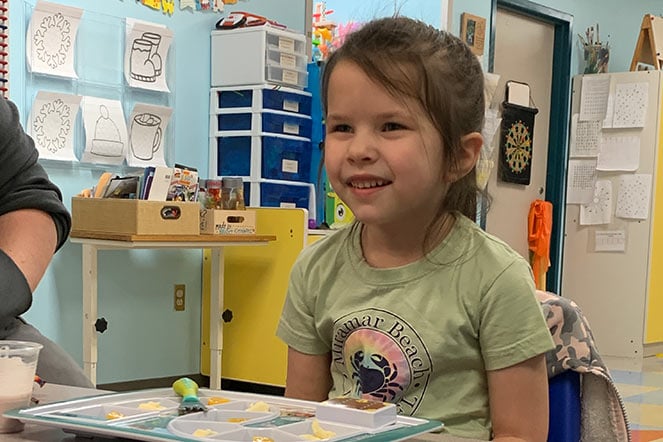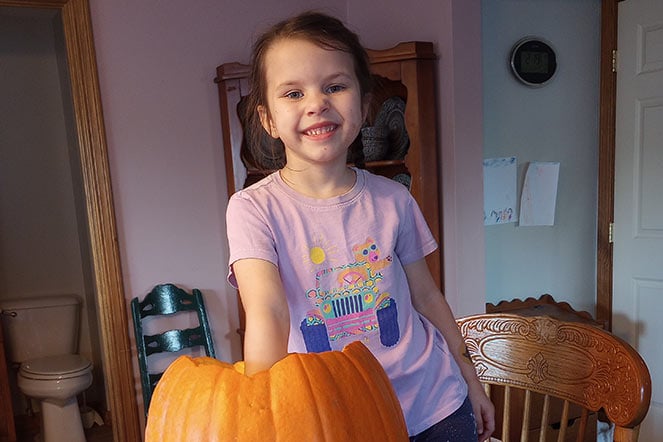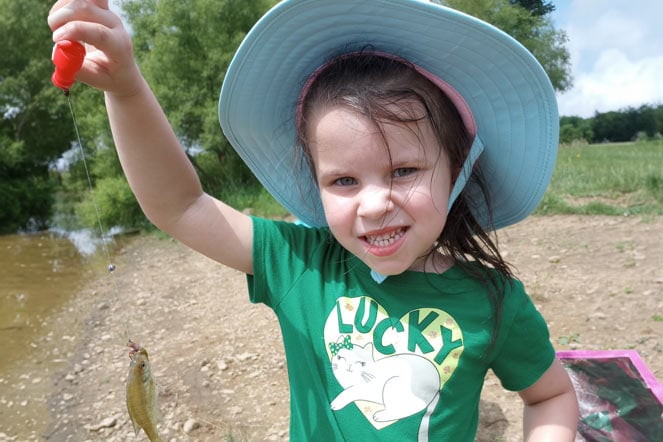Medical nutrition therapy was included in Lila’s plan of care to address her being underweight, unable to gain weight, joint and muscle weakness, and pain and oral-sensory feeding issues, all related to hypermobility syndrome. “Through nutrition intervention, combined with occupational therapy, Lila has been able to gain weight and try new foods,” said Wendi Connelly, RD/LDN. “She is also now using vitamin and mineral supplements that specifically improve bone and muscle development, and help to alleviate her joint pain,” she added.
“Physical therapy has taught us strategies for strengthening Lila’s core, while protecting her joints,” said Alecia. Her physical therapist, Laurie Hudson, PT, BS, added that they have spent a lot of time in the therapy pool because the buoyancy of the water helps to reduce stress on joints. “We have taught Lila ways of playing that build her core strength and increase motor control in ways that reduce joint stress,” she added. “The pool is an excellent option for that.”
Through occupational therapy, Lila learned how to modify her daily activities to allow her to continue to participate in the things she loves to do. She also received a form of desensitization therapy to help lessen her aversion to pressure on her skin. “Her rheumatologist explained to us that her condition causes nerve endings to misfire, which makes her very uncomfortable in her skin at times,” explained Alecia. The desensitization techniques provided her body with gentle deep pressure, triggering the sensations that typically make her uncomfortable.
“By incorporating play into each of these activities, the sensation of deep pressure became more tolerable, which in turn was able to be carried over into her everyday life,” said Lila’s occupational therapist, Allison Blatt, MS, OTR/L. Prior to the therapy, Lila had a hard time sitting side by side with family members because she could not tolerate the pressure on her legs.
Lila's diagnosis of hypermobility syndrome has presented many challenges, but thanks to the comprehensive and compassionate care provided by Shriners Children’s Erie, she has found some hope and relief. Every aspect of Lila's care has been tailored specifically to address her unique needs. With the guidance of her dedicated clinical team, Lila has not only found temporary relief of some of her symptoms, but has also learned invaluable strategies to navigate her daily life with greater ease.





